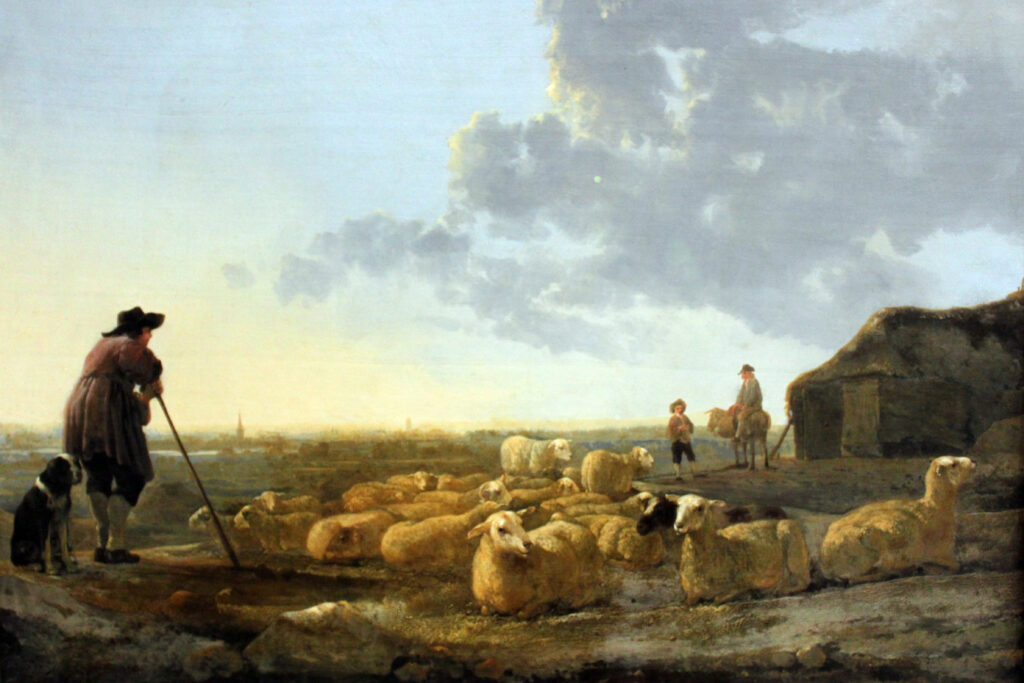This is a cantata for the second Sunday after Easter (or “Good Shepherd” Sunday), composed by Bach for performance on April 8th, 1731. It is a “chorale cantata”, and it was later assigned retrospectively to the chorale cantata cycle of 1724/25, which had a gap for this Sunday. A chorale cantata is one in which all, or most, movements are based on a chorale text and its associated melody, whether overtly or transformed to some degree.
In this case, the libretto for the cantata is a paraphrase of Psalm 23 by Wolfgang Meuslin, written in 1530. Psalm 23 is directly related to the Gospel of the Good Shepherd Sunday, John 10: 11-16, in which Jesus uses the allegory of the shepherd to describe his relationship with his followers.
Meuslin’s text has five verses, which become the five movements of Bach’s relatively short cantata. The piece is orchestrated for 2 French horns, 2 oboes d’amore, strings, four-part choir, four solo voices and continuo. It opens with a chorale fantasia in which the horns take the lead, with thematic material derived from the chorale tune. After the instrumental introduction, the sopranos enter with the chorale tune in long notes, one verse at a time, while the remaining voices and the orchestra weave a texture around it.
The next movement is an alto aria, with oboe d’amore and continuo accompaniment. It refers to the image of the shepherd taking the sheep to water, a symbol of the Holy Spirit. To represent the peacefully flowing waters, the meter is set to 6/8, and the undulating groups of 16th notes in both the oboe and voice parts illustrate this concept as well. The chorale tune is less clearly represented here, although it could be argued that the first four notes of the theme are an inversion of the chorale opening.
The bass recitative that follows is a masterful illustration of the text in music. The first section represents the “wandering in the dark valley” with low, descending scales in the continuo line and juicy dissonances. The second part, an “accompagnato” with strings, the distressed harmonies for “persecution, sorrow, trouble” lead to a resolution in major mode thanks to the comfort of God.
In the fourth movement, a duet for soprano and tenor with strings and continuo, the text talks about “setting a table” and an “optimistic and fresh heart”, which inspired Bach to set this movement to a dance-like tune reminiscent of a bourrée. The theme is based on the transformed chorale melody, enunciated first by the strings and then by the voices.
The final movement is a plain chorale with independent parts for the horns and oboes mainly to accommodate limitations in the instruments’ registers.
